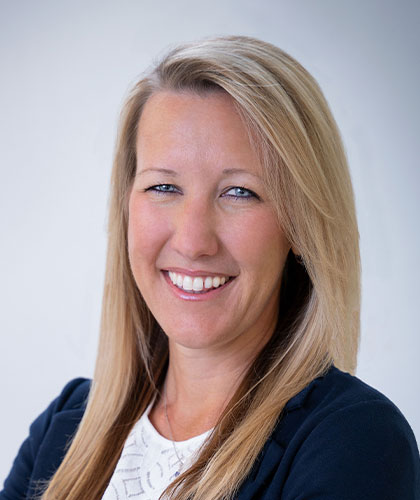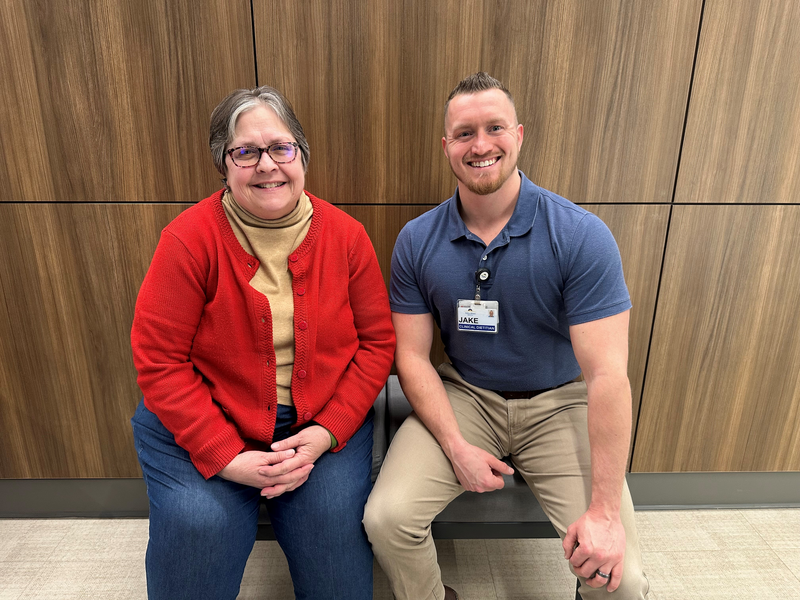Karen Long knew something was very wrong.
She was headed home from her job at a grocery warehouse in York County. It took her 45 tortuous minutes to walk from her desk to her car in the nearby parking lot, because she had a pressure in her chest that was so bad she had to stop every few feet to rest.
Karen, 67, of York, had been experiencing the uncomfortable sensation for a few months, particularly when walking. It turns out that pressure in the chest, rather than intense pain, is one of the ways that women experience heart disease differently than men.
Other heart disease symptoms more common to women than men include shortness of breath, jaw pain, nausea, fatigue, sweating, indigestion and lightheadedness.
After the long walk to her car, Karen called her family physician and he referred her to WellSpan Cardiology, where she saw interventional cardiologist Dr. Rhian Davies, who is an expert in women’s heart health. Dr. Davies has regularly hosted other female cardiologists at WellSpan to discuss women’s heart health and participate in live case demonstrations streamed around the globe.

Dr. Rhian Davies
Dr. Davies took Karen into the cardiac catheterization lab at WellSpan York Hospital and found she had four significant blockages in her arteries. Two were completely blocked, one was 90% blocked and one was 80% blocked.
“I was the walking dead,” Karen says.
Dr. Davies discussed care options. Karen was strongly opposed to having open-heart surgery, which both of her parents had undergone, because she felt the healing process would be overwhelming. WellSpan physicians work to provide individualized care designed to meet a patient’s wishes and needs, so Dr. Davies decided to treat Karen by placing stents in her cardiac arteries instead of performing open-heart surgery.
In three procedures over five months, the cardiologist placed eight stents and also performed atherectomy, a method used to remove calcified blockages from the blood vessels sometimes referred to as the “Roto-rooter” procedure.
Karen now takes cholesterol medication and also sees a WellSpan Heart and Vascular Clinic dietitian, Jake Jenkins, to get help in making changes to her eating habits, cutting back on fatty foods, for example, and adding chicken and beans as sources of protein.

Karen Long and Jake Jenkins
“I feel so much better,” Karen says. “My blood is pumping, and I just feel more alive.”
Women and heart disease
Heart disease is the most common cause of death for both women and men in the United States, according to the U.S. Centers for Disease Control. But the heart disease journey can be different for women.
In addition to displaying different symptoms than men, women’s risk factors include:
- Hormonal influences and/or menopause.
- Pre-eclampsia – a potentially dangerous condition that can happen during or after a pregnancy that causes high blood pressure and can cause organs to not work normally. Women who experience it may develop heart disease.
- Emotional distress, which can increase the risk of a heart attack. Women tend to internalize emotions more than men and chronic stress can cause higher levels of inflammation in the body.
Dr. Davies says that physicians must carefully listen to women – as well as all patients – who are experiencing heart disease symptoms so they can offer them the appropriate testing and treatment.
She asks her female patients about what seem like small changes and then listens carefully to their responses, which may offer clues about heart disease.
“I often ask ‘Can you still do what you did six months or a year ago?’ “Dr. Davies says. “Often women will say, ‘No, I can’t get around as quickly at the grocery store as I used to. I need to lean on the cart,’ or I can’t go up the stairs without stopping to catch my breath.’ It’s just the subtle difference that can be the tip-off.”
And while the treatment options for men and women are the same, Dr. Davies notes that women sometimes require a different approach to cardiac catheterization procedures due to the anatomy of their hearts and the smaller size of their arteries. She knows she needs to properly prepare their vessels for treatment and, if they already have stents, she might even use a drug-coated balloon to place a new layer of drug on the existing stents rather than placing additional stents.
Knowing when to seek help
Karen said she is grateful that Dr. Davies took her concerns seriously. She urges other women to understand that heart disease may impact them as well, to seek care if they don’t feel well and to be honest and direct with their physician.
“Women can be from the era when you didn’t say anything. But you need to listen to your body and be your own advocate,” she says. “I stress when I talk to any woman, ‘You have got to tell the doctor how it is.’ You have to say, ‘Listen to me. I live in this body, and I know how I feel.’
“Dr. Davies listened. And her team listened. That was the absolute best.”
How healthy is your heart? Find out by taking this assessment.
Tags:


